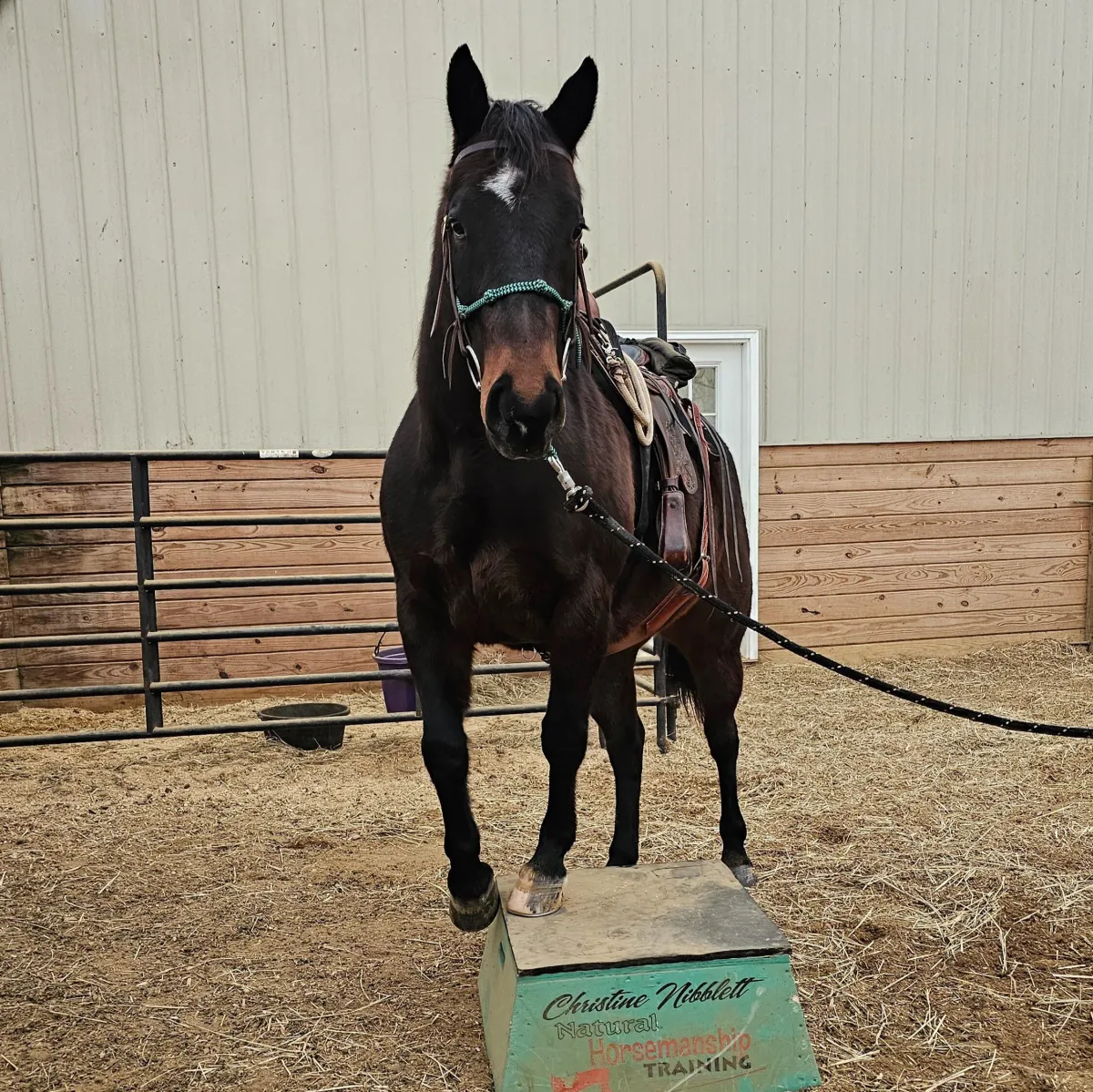
Advantages of Horse Training in the Winter
Winter Training: Preparing Your Horse for Spring Success
Winter often feels like the "off-season" for horse training. Between freezing temperatures, poor footing, and shorter days, it’s tempting to put progress on hold until spring. But what if I told you that this slower season is the perfect time to lay the foundation for a more prepared horse?
Many riders assume that "working" their horse means focusing on physical exertion. While conditioning is beneficial, it’s not the only way to advance your horse’s skills. Winter provides a great opportunity to refine communication, reinforce positive behaviors, and build confidence in areas that might otherwise be overlooked.
What Challenges Your Horse?
Take a moment to assess your horse’s weaknesses. Ask yourself:
Does my horse struggle with trailer loading?
Are they hesitant around water crossings or wash stalls?
Do they resist bridling or haltering?
Are they anxious when tied or confined?
Do they spook easily at new obstacles or settings?
Rate each challenge on a scale from 1 to 10—1 being a mild hesitation, 10 being absolute panic and resistance. Identifying these problem areas now will help you create a focused winter training plan.
Why Winter is the Perfect Time for Training
Cold weather naturally slows down our routines. Instead of rushing to tack up and ride, take advantage of this time to refine groundwork, improve responsiveness, and build confidence in specific areas. You could spend winter doing nothing—or you could use it to set your horse up for success when riding season returns.
Let’s dive into one key area that can make a game-changing difference: Building Confidence with Obstacles.
Building Confidence: The Obstacle Approach Method
If your horse struggles with trailer loading, water crossings, jumps, or entering new spaces, it often comes down to fear of pressure and confinement. Horses naturally avoid tight spaces or unknown footing because, as prey animals, their survival instincts tell them to escape potential danger.
To help your horse become more confident in approaching, crossing, or entering new spaces, you can use a simple yet powerful obstacle approach method.
Step 1: Understand the Horse’s Perception of Pressure
When a horse approaches an obstacle (like a trailer, wash stall, or tarp), they feel pressure from multiple angles:
Front: The unknown ahead of them.
Sides: The walls of the trailer, stall, or narrowing path.
Below: The footing change (water, rubber mats, ramps, tarps).
Above: The trailer roof, stall ceiling, or overhanging structures.
Behind: The pressure to move forward.
Recognizing these areas of concern will help you approach training with patience and understanding.
Step 2: Evaluate Your Horse’s Confidence
Before beginning any obstacle work, check if your horse can:
Move away from you when asked.
Walk toward something without you leading.
Maintain focus rather than rushing past or avoiding.
If your horse struggles with these basics, work on exercises such as lunging or circling and are you able to move your horse out of your space by backing them at a distance before introducing obstacles.
Step 3: The Tarp Exercise (Foundation for Trailer Loading, Water Crossings & More!)
What You’ll Need:
A large, flat tarp spread out on the ground.
A long lead rope and halter.
A safe, enclosed space.
The Process:
Send, Don’t Lead: Ask your horse to move toward the tarp on their own—do not walk ahead of them. This helps build their confidence rather than relying on your presence.
Face the Obstacle: If your horse hesitates, let them stop and observe. Do not force them forward.
Observe & Wait: Your horse may snort, raise their head, or take a few steps back. This is their way of processing the situation. Stay patient.
Encourage Curiosity: Watch for small signs of curiosity—lowering the head, sniffing the tarp, or pawing. Allow them to explore at their own pace.
No Pushing or Pressure: Resist the urge to drive your horse forward with a whip, clucking, or lead rope pressure. Let them decide to step forward on their own.
Reward Small Progress: If your horse even approaches the tarp, that’s progress! The goal is not to force them over it but to build confidence gradually.
Dwell & Process: Once your horse steps on the tarp, allow them to stand and process. Don’t immediately ask for more.
Step 4: How This Translates to Trailer Loading, Water, & Jumps
By repeating this process with various obstacles, your horse will learn to approach challenges with confidence instead of fear. You’ll see improvements in:
✔ Trailer Loading – Instead of pushing or pulling them in, they’ll willingly walk in.
✔ Water Crossings – They’ll take their time and assess rather than rushing or avoiding.
✔ Jumps & Trail Obstacles – They’ll approach with curiosity rather than hesitation.
✔ Wash Stalls & Stalls – They’ll walk in calmly without feeling trapped.
The Key Takeaway: Slow Down to Speed Up
Training during winter isn’t about forcing your horse to do more—it’s about creating a thinking horse that trusts you and navigates challenges with confidence. The more time you spend refining these small exercises now, the more prepared and willing your horse will be when spring riding season arrives.
So, what’s your horse’s biggest challenge? Start working on it today and see the transformation unfold!
Join the Conversation!
I’d love to hear about your winter training successes and challenges! If you try this obstacle approach method, let me know how it goes. What progress have you seen? What insights have you gained about your horse?
Join me over on Unpuzzled Horsemanship on Facebook and share your experiences. Whether you have questions, want feedback, or simply want to celebrate a breakthrough, you’ll find a supportive community of fellow horsewomen who are on the same journey.
Let’s make this winter a season of progress—one small step at a time!
